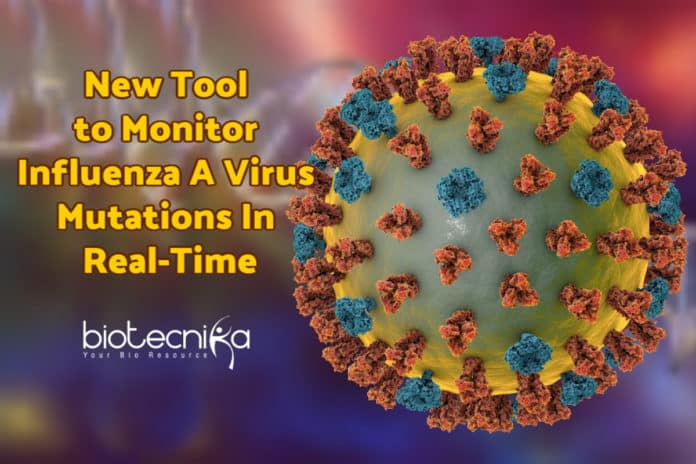New Tool to Monitor Virus Mutations
The replication of viruses could be stopped with the help of the new gold-based tool
A tool to monitor influenza A virus mutations in real-time has been developed by a Rutgers-led team. This could be beneficial in knowing how to stop viruses from replication and help virologists.
In the Journal of Physical Chemistry C, according to a study, the gold nanoparticle-based probe measures viral RNA in live influenza A cells. In virology, experts are, for the first time, monitoring mutations in influenza with unparalleled sensitivity using imaging tools with gold nanoparticles.
At Rutgers University-New Brunswick, in the School of Engineering, an associate professor in the Department of Materials Science and Engineering, and the senior author of the study Laura Fabris said, “Important insights on the possible conditions that favor stopping viral replication and the cellular features that lead a cell to produce abnormally high numbers of viral offspring can be provided by our probe.”
A leading cause of death and illness is viral infections. For example, the novel coronavirus has infected more than 40,000 people and has caused deaths of more than 1000 people globally as of Feb 11, according to a report by the World Health Organization.
A highly contagious virus that arises every year, the Influenza A virus is concerning because of the unpredictable effects of its vaccine. As the influenza A virus replications, it mutates rapidly and is growing resistant to drugs and vaccines.
To study the behavior of Influenza A as well as any other RNA viruses, this new study highlights a promising new tool for virologists. To study the mutations in cells, it was required to destroy them to extract their contents until now. With the new tool, researchers can now get snapshots of viral replication as it occurs as the new tool enables analysis without killing the cells. Monitoring the influenza A virus in animals and studying multiple segments of viral RNA are the next steps to be taken.
Kholud Dardir, who earned a doctorate at Rutgers is the lead author of the study. A doctoral student, Maria Atzampou, and Hao Wang, a senior postdoctoral associate are among the Rutgers co-authors. Scientists at the University of Illinois at Urbana Champaign also contributed to the research.
A tool to Monitor Virus Mutations Source






